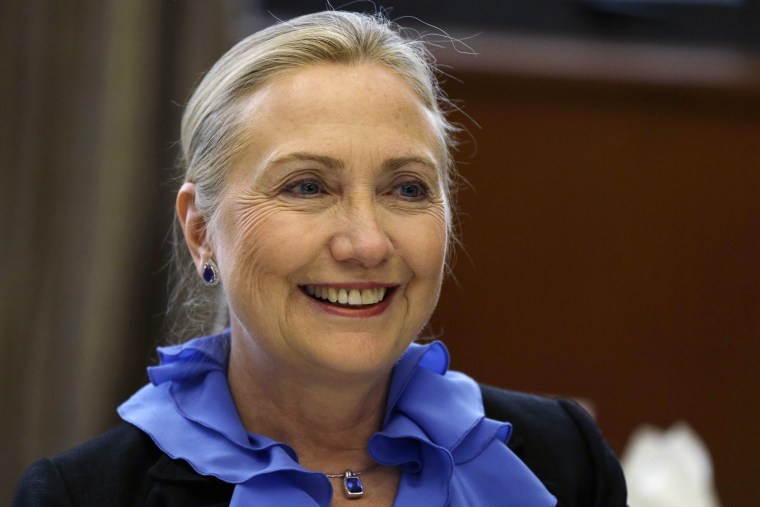In case you missed it, there was a report this week that Janet Napolitano–the Homeland Security chief and former Arizona governor–wants to run for president in 2016.
The news didn’t exactly make waves – which in a way is a really big deal. Because it means the novelty of female presidential candidates is really starting to wear off.
Let’s try to put this in perspective. Before Hillary Clinton’s campaign in 2008, just three women had sought the Democratic presidential nomination. One of them, Shirley Chisholm in 1972, waged a symbolic effort, while the other two–Pat Schroeder in 1988 and Carol Moseley Braun in 2004–didn’t even last until the first contest.
Very few others even contemplated running. Geraldine Ferraro was briefly considered a prospect after her historic turn on Walter Mondale’s ticket in 1984, but she never took any real steps to run. And Dianne Feinstein dropped hints in the late 1980s that a future White House bid might be on her mind…only to lose the California governor’s race to Pete Wilson in 1990. So instead of running for the top job in 1992, she was left to settle for a Senate seat that year, a seat she’s been happy to keep ever since.
And that’s really it, as far as female prospects for the Democratic nomination went…until 2008….when Hillary won 18 million votes and a bunch of primaries and caucuses, and when she lost out to a black man who went on to win the White House, defeating a Republican ticket that included a woman. In the wake of that campaign, the notion that the terms “presidential prospect” and “white guy” went hand in hand felt positively antiquated.
That's what makes the early stages of the ’16 race so interesting. The clear front-runner for the Democratic nomination is, of course, Hillary. If she decides to run, she has the potential to clear out the field in the same way Al Gore did back in 2000, when he faced only a weak challenge from Bill Bradley. Many would-be candidates–male and female–would think twice if she’s in the race.
But if she passes, it won’t mean a return to the days of all-male fields. Amy Klobuchar, the senator from Minnesota, has sent signals she’s interested. So has Kirsten Gillibrand–although it’s likely she’d defer to her state’s governor, Andrew Cuomo, who in turn would defer to Hillary. And now we know Napolitano wants to run too.
I don’t know if any of them could win, but they’d all be credible candidates with solid credentials, not novelty acts.
This is a trend that will accelerate in the years to come. Women were particularly crucial to President Obama’s reelection and Democrats are leaning on them more than ever. And there are now a record number of female Democrats–16-- in what has long been an incubator of presidential ambition, the Senate. And in the feeder system for the Senate–a majority of Democratic members is, for the first time ever, not comprised of white males.
So one way or another, there will be at least one woman running a serious campaign for the Democratic nomination in 2016–and there’ll only be more in the elections after that. Expect similar, if slower, progress on the Republican side. Women have made strides there too, but not quite as dramatically. There are only four Republican women in the Senate today, although the GOP has the edge when it comes to female governors.
This is what the future looks like – presidential fields that look a little less like Augusta National and a little more like … well, America.
